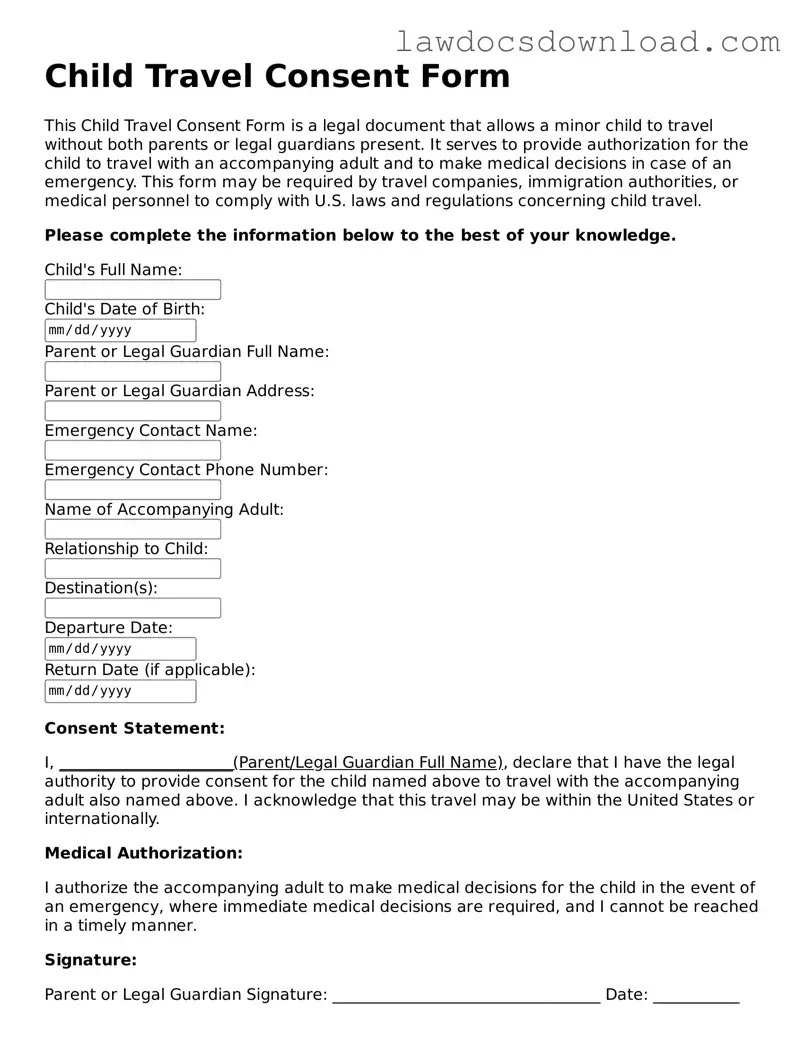The Medical Consent Form is similar to the Child Travel Consent Form in that it also grants permission, but instead of travel, it authorizes a child's medical treatment. Parents or guardians use this form to designate another adult to make healthcare decisions for their child in their absence. Like the travel consent, it is crucial when the legal guardians are not available to make timely decisions, ensuring the child receives necessary medical care without delay.
Another related document is the Child Custody Agreement. This legal document outlines the arrangements between parents regarding the care and custody of their children. It shares similarities with the Child Travel Consent Form as it often contains stipulations about travel, specifying whether a child can travel domestically or internationally with one parent or needs consent from both. The underlying principle of protecting the child’s well-being and ensuring clear communication and agreement between guardians is central to both documents.
The Power of Attorney for Child is also akin to the Child Travel Consent Form. It provides a more extensive authorization, allowing an appointed adult to make decisions on behalf of the child, covering areas from education and health care to travel. While the travel consent focuses specifically on travel permissions, a Power of Attorney for Child encompasses broader authority, including the power to handle travel arrangements and consent on the parent's or guardian’s behalf.
Emergency Contact Forms share a certain level of similarity with the Child Travel Consent Form by offering vital information needed in unexpected situations. While the travel consent includes details about the child, the adult they are traveling with, and the travel itinerary, Emergency Contact Forms provide contact information of guardians, health information about the child, and preferences for emergency medical treatment. Both forms serve as a tool for ensuring child safety in situations where the primary caregivers are not present.
The Student Permission Slip is another document related to the Child Travel Consent Form. Used by schools, it grants a child permission to participate in school activities, particularly those occurring off school premises, like field trips. The key similarity lies in the requirement for parental or guardian consent to allow a child to engage in specific activities, emphasizing the importance of adult awareness and authorization for minors’ activities outside the usual environment or care.
Lastly, the International Travel Child Consent Form is a variant of the Child Travel Consent Form tailored specifically for international journeys. It includes additional details pertinent to cross-border travel, such as passport numbers, destination countries, and sometimes even details about the child’s accommodations abroad. This document is crucial for complying with the varying legal requirements of different countries regarding minor travel, especially in preventing child abduction and ensuring the child’s safety during international trips.
